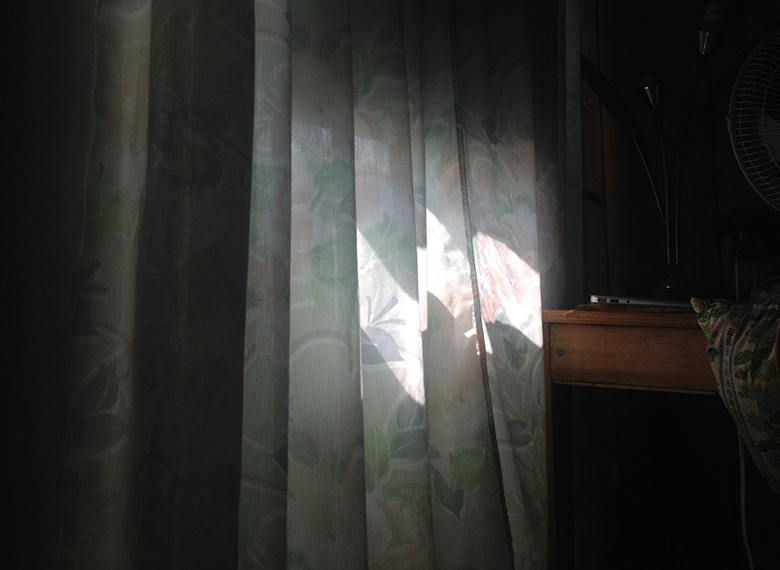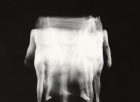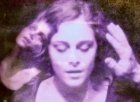I was recently left dead inside by “Longform Journalism in the Digital Age,” a panel discussion held at the Banff Centre a few weeks ago boasting the Online Editors of The Walrus and The Globe and Mail, the Director of NYU Journalism, and the Chair of the Centre’s Literary Journalism program. Descriptive of how desperate I was for the unveiling of some grand and true dream here, for some justification for “all of this,” and—I would like to think—emblematic of the technology-age’s chaos-driven desperation for the steadying advice of some cabinet of oracles, I walked for an hour to rent a car to drive through a blinding rainstorm to get to this talk.
The following things left me apprehensive: the average person touches their phone 101 times day; it’s sublime—magazines can reach you in your pocket, programmers can track the direction and speed of your scroll through a page, statistics and intelligent algorithms can, impressively, predict your interests as the User and modify your reading material accordingly. Websites, in the future, will even allow you to customize documentaries to your taste. Digital journalism is a direct response to the desires of the User, and Time is its #1 commodity. The User doesn’t have time to read a long essay on the train ride to work. The User doesn’t want to watch a long video when they could be interacting with something more tactile and immediate in its reward. The User is spoon-fed.
Now at my grandparents’ farm, carved into Saskatchewan’s Boreal Forest, lying on my stomach, staring at the light on the curtain in my room, I am troubled by how little all that means to me right now. Don’t get me wrong, I have had my share of coding and designing iPad Apps and the evidence of human intelligence in the digital still astounds me. But I am troubled that the divinity of the digital stops ruling once you leave WiFi. And what you are left with is yourself: a being who sweats, cries, can fall in love, can get sick, can possess all the tendernesses of the world. There is a simple disconnect here, one that should not be ignored or squeezed out of consideration, because inside of it lies a hefty discussion.
But I am troubled that the divinity of the digital stops ruling once you leave WiFi. And what you are left with is yourself: a being who sweats, cries, can fall in love, can get sick, can possess all the tendernesses of the world.
Jacob Wren and Jeanne Randolph are two writers currently leading The New Gallery’s Art Writing Residency in Calgary on the premise that critical dialogue can and should allow for all the tendernesses and—dare I say—humour of a human. Art writing can be a personal private gesture, it can be a poem, a sculpture, a performative walk to Tim Horton’s, it can be a complete remake of the original, and is not synonymous with publicity. Why must it be boring, cold, Canadian Art?
Luma is a 5-article magazine (and I am using the word “article” here broadly), small enough to enable each article to act as a single paragraph in a 5-paragraph essay, to speak to one another loudly and continually, ever-existing ghosts of a snapshot in our time—the summer of 2015—sprinkled with the mirage of immortality the Internet implies. In this essay, the writers (and I am using the word “writers” here broadly) discuss that space between record of the thing and the thing itself, the film and its subject, traversing the space between art and art criticism, between being at the farm swarmed with horseflies and being at a lecture on digital sleekness and consumability.
Jasmin Risks’s long still shots in “Warp/Weft/Wept,” a response to pattern, subvert entertainment, user-friendliness, and hand-holding. In fugue, J.D. Mersault’s “A Failed Poet,” describes Hollis Frampton’s notoriously long, still films. Frampton’s role as jack-of-all trades, student of all fields, prophesied the interdisciplinary thinker of today, with access to knowledge—ironically—beyond comprehension. Stephen Nachtigall recognizes art’s ability to manifest humanity’s more abstract dialogues: turning philosophy into art, formatting scientific data as poetry. Jesse Cumming and The Iris Film Collective talk about salvaging physicality in film and, in so doing, warmth. And, of course, Murray Leeder calls Guy Maddin at home to talk about urbandictionary.com and William Castle gimmicks.
Criticism, reflection, journalism, whatever you want to call it, is here to tell us that, on all sides, there are people, erred, full of emotion, and able to believe the world was built on a turtle’s back despite all the weight of science. There are fields of study more interesting than art itself, and—this is a grand and true statement, this is what I want someone to tell me—loudly and squeakily adjusting my spot on the bed, that is why art exists.



